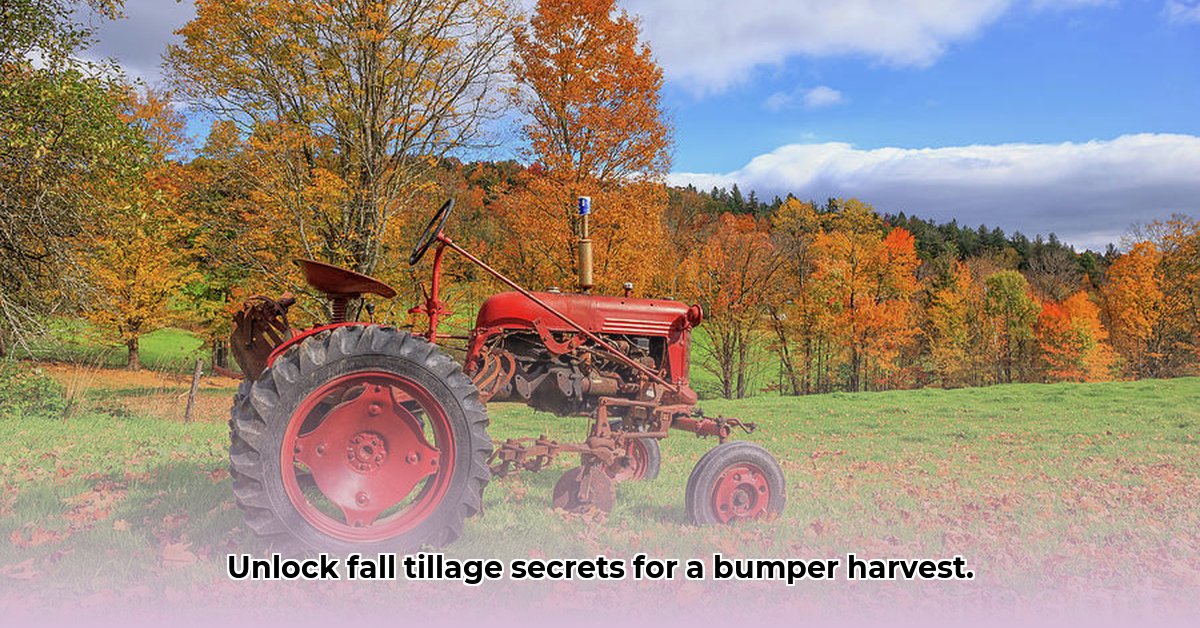
Understanding Deep Tillage in Sustainable Agriculture
Deep tillage, typically performed with powerful tractors to a depth of 18 inches or more, is a common practice in many agricultural operations. While offering benefits such as improved drainage and root growth, it also presents significant challenges for sustainable farming. This guide explores the complexities of deep tillage, balancing its immediate advantages with its potential long-term ecological consequences. Are the short-term gains worth the potential long-term risks to soil health and the environment? Let's examine the evidence. For smaller farms, consider alternative tillage options.
The Deep Tillage Debate: A Critical Analysis
The benefits of deep tillage, particularly for larger farms using robust equipment, are readily apparent: improved soil aeration leads to healthier plant growth, and enhanced root systems promote nutrient uptake. However, the long-term impact on soil structure, carbon sequestration, and the broader soil ecosystem remains a subject of ongoing scientific investigation. The very act of deep tillage can disrupt the delicate balance of soil organisms, affecting beneficial microbes essential for nutrient cycling and overall soil health. This highlights the need for a nuanced approach, considering the inherent trade-offs. "The effects of deep tillage vary significantly depending on soil type, climate, and cropping system," notes Dr. Emily Carter, Soil Scientist at the University of California, Davis.
Weighing the Advantages and Disadvantages of Deep Tillage
The decision to employ deep tillage necessitates an informed assessment of its potential benefits and drawbacks. The following table summarizes the key considerations:
| Advantages | Disadvantages |
|---|---|
| Improved soil aeration and water infiltration | Increased fuel consumption and greenhouse gas emissions |
| Enhanced root growth and potential yield increases | Increased risk of soil erosion and degradation |
| Reduced soil compaction in heavily worked soils | Potential disruption of beneficial soil microbes |
| Improved nutrient availability in some contexts | Long-term impacts on soil structure remain uncertain |
This highlights the critical need for careful consideration, data-driven decision-making, and a holistic approach to farm management. How can we maximize the benefits while mitigating the risks?
Sustainable Deep Tillage: Practical Strategies for Responsible Farming
Sustainable deep tillage isn't about eliminating the practice entirely, but rather about optimizing its implementation to minimize negative impacts. The following steps provide a framework for responsible deep tillage:
Prioritize Fuel Efficiency: Employ fuel-efficient tractors and adopt precision farming techniques, such as GPS guidance, to reduce fuel consumption and greenhouse gas emissions. Newer models often boast significantly improved fuel efficiency. "Investing in efficient machinery is crucial for the long-term economic and environmental viability of deep tillage," explains Mr. John Miller, Farm Manager at Green Valley Farms.
Implement Regular Soil Monitoring: Conduct frequent soil tests to monitor soil structure, organic matter content, and microbial activity. This allows for adaptive management strategies, adjusting tillage practices based on observed effects. Regular monitoring is critical for making data-driven decisions.
Combine Approaches: Integrate deep tillage with less intensive methods like no-till farming or conservation tillage techniques. A multifaceted approach tailored to specific soil and crop conditions often yields the best outcomes.
Embrace Precision Agriculture Technology: Precision agriculture technologies, including GPS-guided tractors and variable-rate application, improve efficiency and minimize environmental impact. While initial investment may be substantial, the long-term economic and environmental benefits are significant.
Integrate Deep Tillage into Holistic Farm Planning: Deep tillage should be strategically integrated into broader farm management strategies which include cover cropping and crop rotation. A holistic plan reduces the environmental impact of deep tillage.
Mitigating Greenhouse Gas Emissions from Deep Tillage
Deep tillage significantly affects soil carbon storage, potentially leading to increased greenhouse gas emissions. The method of nitrogen fertilizer applications powerfully influences this impact. Nitrogen fertilizer breakdown produces nitrous oxide (N₂O), a potent greenhouse gas far exceeding carbon dioxide's global warming potential. The following strategies target reduction efforts:
Deep Fertilizer Injection: Injecting anhydrous ammonia and other volatile fertilizers deep into the soil minimizes atmospheric contact, reducing N₂O production.
Precision Soil Testing: Accurate soil testing guides precise fertilizer application, preventing wasteful over-application, a major source of N₂O emissions.
Alternative Fertilizer Sources: Employing slow-release fertilizers minimizes the rapid nitrogen surge that intensifies N₂O production.
Precision Agriculture Implementation: Utilizing GPS-guided applicators ensures precise fertilizer placement, maximizing efficiency and minimizing losses.
Cover Crops and Crop Rotation Integration: These enhance soil health, promoting nitrogen retention and reducing the need for synthetic fertilizers.
Sustainable Tillage Practices: Explore reduced tillage methods to minimize soil disturbance.
Towards a Sustainable Future for Deep Tillage
The future of deep tillage depends on continued research, technological innovation, and collaborative efforts among farmers, researchers, and policymakers. This collaborative approach is essential for achieving sustainable agriculture.